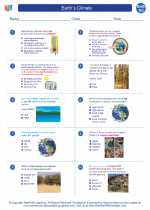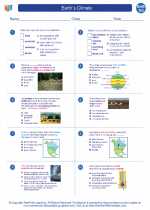Deciduous Forest
A deciduous forest is a biome characterized by trees that shed their leaves annually. These forests are found in temperate regions of the world, including North America, Europe, and parts of Asia.
Climate
Deciduous forests have four distinct seasons: spring, summer, autumn, and winter. The climate in these forests varies widely throughout the year, with warm summers and cold winters. The average annual precipitation ranges from 30 to 60 inches, which supports the growth of a variety of plant species.
Flora
The dominant tree species in deciduous forests include oak, maple, beech, and hickory. These trees shed their leaves in the fall and remain dormant during the winter months. Understory vegetation in deciduous forests includes shrubs, ferns, and wildflowers that thrive in the dappled sunlight that filters through the canopy.
Fauna
Deciduous forests support a diverse array of wildlife, including mammals such as deer, bears, squirrels, and raccoons. Birds such as woodpeckers, owls, and warblers are also commonly found in these forests. The rich biodiversity of the deciduous forest provides habitat and food sources for a wide range of species.
Soil
The soil in deciduous forests is typically rich in nutrients due to the decomposition of leaf litter and organic matter. This fertile soil supports the growth of diverse plant life and provides a stable foundation for the ecosystem.
Human Impact
Deciduous forests have been heavily impacted by human activities, including deforestation, urbanization, and agriculture. Conservation efforts are critical to protect these ecosystems and the species that rely on them for their survival.
Study Guide
- What are the defining characteristics of a deciduous forest biome?
- Describe the climate of deciduous forests and how it influences the flora and fauna.
- Identify the dominant tree species and understory vegetation found in deciduous forests.
- Discuss the diverse wildlife that inhabits deciduous forests and their ecological roles.
- Explain the importance of soil in supporting the biodiversity of deciduous forests.
- What are some of the major human impacts on deciduous forests, and why is conservation important for these ecosystems?
Understanding the characteristics and ecological significance of deciduous forests is essential for appreciating the complexity of this biome and the importance of conservation efforts to protect it.
.◂Earth Science Worksheets and Study Guides High School. Earth`s Climate

 Worksheet/Answer key
Worksheet/Answer key
 Worksheet/Answer key
Worksheet/Answer key
 Vocabulary/Answer key
Vocabulary/Answer key
 Vocabulary/Answer key
Vocabulary/Answer key
 Vocabulary/Answer key
Vocabulary/Answer key
